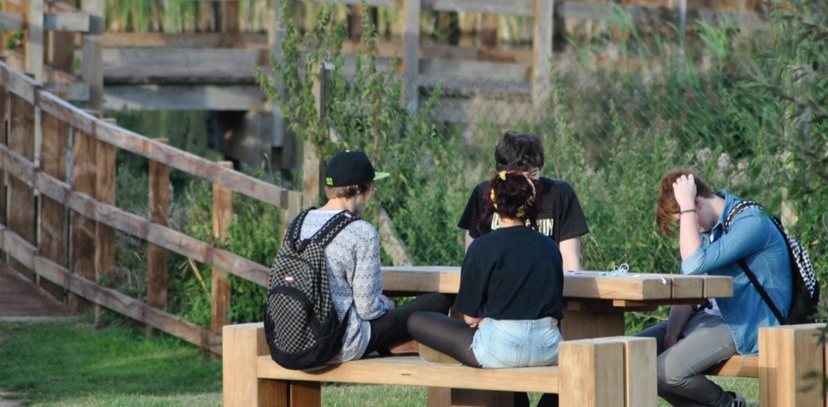
This article was first published in Urban Times on January 5, 2013.
When new housing developments are planned and developed, there is a unique potential to intervene to improve the quality of place, and the quality of local social life.
As the UK Government sets out its plans to accelerate house building in England to meet soaring demand for homes, we need to consider how the new places that are created as a result of this current policy drive become the thriving communities of the future, rather than expensive mistakes. New planning guidance for England, set out last year in the National Planning Policy Framework (NPPF), includes a "presumption in favour of sustainable development" for all new housing. However, in practice, "sustainability" often emphasises environmental and economic dimensions, with social sustainability, capturing the strength of a community and residents' quality of life, given less prominence.
The housing developer, The Berkeley Group, who build mainly in London and the South East, commissioned new social enterprise Social Life (created by the Young Foundation), working with Professor Tim Dixon from Reading University, to create and test a social sustainability measurement framework. For us, the commission from The Berkeley Group was an intriguing proposition. The housebuilding industry is traditionally more preoccupied with the process of development to the point of sale, than what happens after developments are completed.
The project was also challenging because of the low profile of social sustainability. Environmental and economic sustainability are more familiar to professionals and public, largely because they are easier to describe, measure and action. Social sustainability, focusing on the intangibles about how people feel about the quality of their lives in local neighbourhoods, demands an exploration of wellbeing and belonging. Of how neighbourhoods thrive as well as fail.
The starting point of the work was the social sustainability framework developed by the Social Life team when they were at the Young Foundation. Published in 2011 in the report "Design for Social Sustainability", this was based on a review, commissioned by the Homes and Communities Agency, of evidence in the UK and internationally about what makes communities flourish.
The framework developed for Berkeleys evolved from this original work. It assesses three critical dimensions of new housing developments developments: their "amenities and social infrastructure"; "social and cultural life", and residents "voice and influence". A survey of residents and a site survey were commissioned to assess this on the four developments. Questions explored residents' perceptions of crime, whether they felt they could influence what happens in the area, how they think people from different backgrounds get on, whether they know and trust their neighbours, and their wellbeing.
Results were benchmarked against what is known about comparable socio-geographic groups, using the most recent available data from national surveys run by government and research councils. Benchmarks were constructed using the UK Government National Statistics Office's (ONS) socio-geographic profiles. Results were statistically tested to exclude those that had no significance.
The framework was tested in four areas and the results revealed that, relative to comparable areas, residents of these four developments were the more likely to feel they belong in their neighbourhoods, and more likely to regularly talk to their neighbours. They plan to stay in the community longer and are more likely to feel safe.
The results challenge the popular belief that new housing developments are less sociable and attractive places to live than older, more established communities. A body of evidence supports this stereotype, from the well documented experience of the English New Towns, and the prevalence of "new town blues" among early residents; as well as more recent studies, including from Cambourne in Cambridgeshire, where rates of anxiety and mental illness were so high amongst people living in a new development that the health authority commissioned research to explore what was going on.
No one sets out to build communities that fail. But the fine words often invoked about putting residents at the centre of the process of making places and building housing are rarely delivered. The housebuilding industry in the UK has made significant progress in improving the environmental performance of new housing and public spaces in the past 10 years. This has included adoption of new standards, including the Code for Sustainable Homes and Building for Life. The challenge now, for all the many stakeholders involved in creating new developments, from local authorities to communities, architects, developers and housing associations, is to build on this progress and ensure that new housing routinely creates strong communities, and that this becomes the norm, the standard that is expected.
Our research shows that it is possible to quantify the social aspects of sustainability, and helps us begin to build the practical knowledge to understand what needs to be put in place to enable communities that thrive. This is work in progress: it would be fascinating to compare different sorts of developments, or to take a longitudinal approach, or to more extensively explore the experience and perceptions of people who live in areas adjacent to new housing developments. This would give a richer picture and help build our practical knowledge of the relevance of the concept of "social sustainability". The critical step is to explore how this emerging knowledge can be put into practice and inform the way that new developments are built.
The report "Creating strong communities: how to measure the social sustainability of new housing development" can be downloaded from this website, plus a technical report and appendices including all the data used in this research.
This blogpost was written by Nicola Bacon. For more articles published in the Urban Times click here.